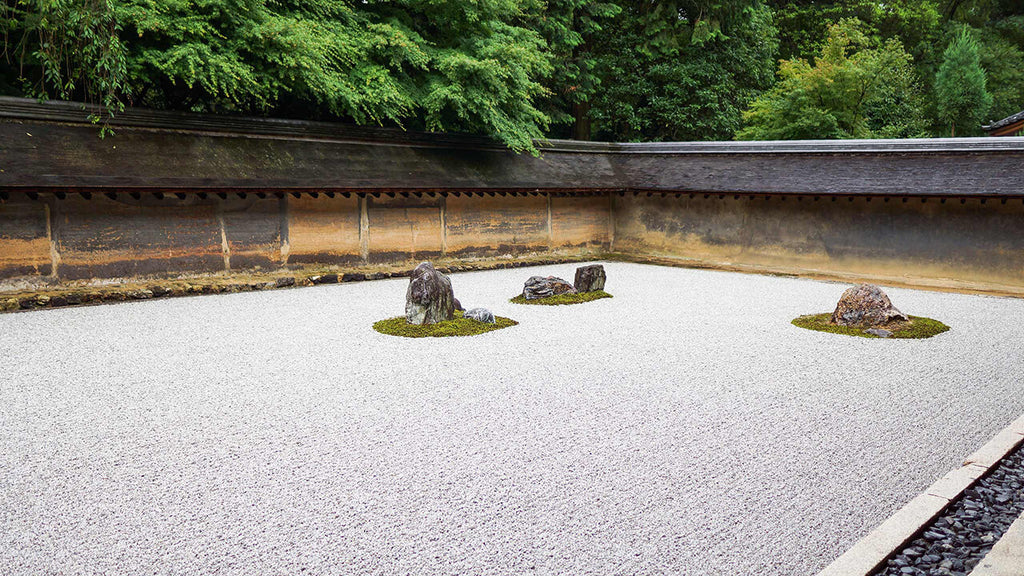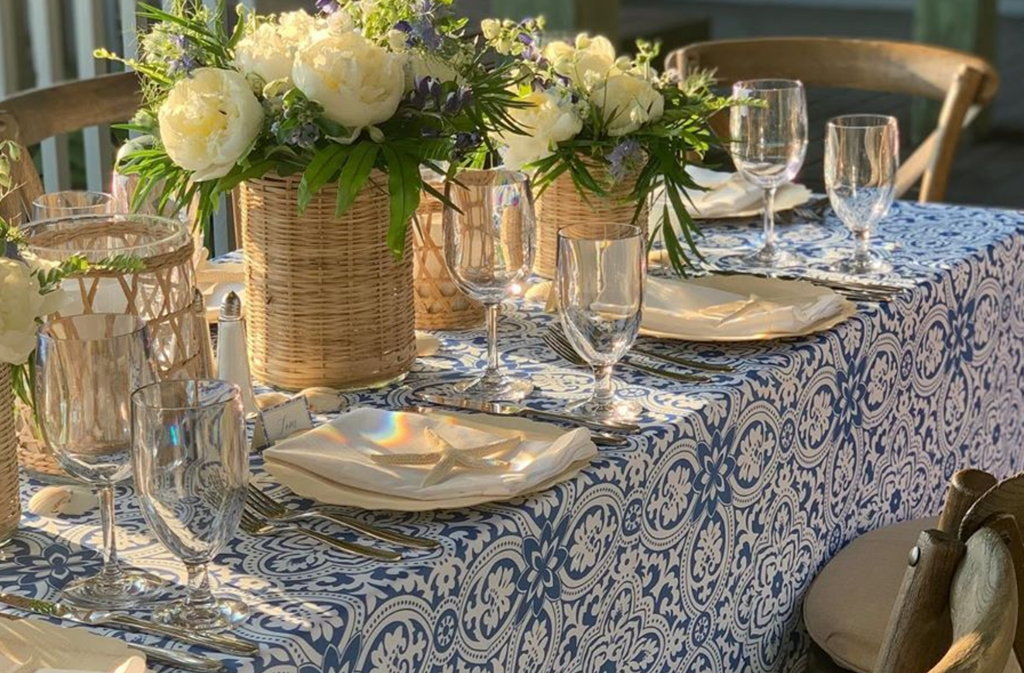April is classically known as the month for spring cleaning, and for good reason. With warm weather on the rise, it’s time to open the windows, let the fresh air in, and de-clutter from a winter indoors. Some of us dedicate a weekend or more to deep cleaning each spring. But more often than not, that hard work disappears a few short weeks after it’s done. This year, instead of focusing on short-term spring cleaning that only scratches the surface, we’ve taken inspiration from the Japanese concept of wabi-sabi design to put together 6 top eco-friendly spring cleaning tips to help you create a home that’s easier (and greener) to maintain all year round!
What is Wabi-Sabi design?
Although they have some ideas in common, the principles of Wabi-Sabi design should not be confused with minimalism or zen design. The meaning of Wabi-Sabi design can be hard to nail down, but the heart lies in the meaning of the words themselves. While no direct translation exists, “Wabi” has to do with the beauty and simplicity of living in nature. “Sabi” considers the joy and beauty in old, imperfect items. Put together, Wabi-Sabi design finds value in the imperfections of natural materials. The effects of daily wear and tear are celebrated, rather than discarded. Wabi-Sabi design is in direct opposition to the traditional “modern” design aesthetic, where perfection and newness are prized above all else.
When it comes to eco-friendly spring cleaning, Wabi-Sabi design principles can help you put your spring cleaning efforts to use for long-term success. By valuing and caring for your existing items without falling prey to unnecessary clutter, you can begin to incorporate Wabi-Sabi design in your own home. The Queen of declutter, Marie Kondo, has sparked a world-wide movement with her “rules of tidying.” She has shown countless people the joy that comes from keeping only the things that spark joy-and we couldn’t agree with her philosophy and use of Wabi-Sabi when organizing and cleaning more. Begin your own tidying journey with these 6 Wabi-Sabi design-inspired tips for eco-friendly spring cleaning!
6 Eco-Friendly Spring Cleaning Tips Inspired By Wabi-Sabi Design
Take stock of what you really use
When you stop to look around your space, you’ll likely notice that you use a few choice items on a daily basis, and many others aren’t touched for months or years. If you’ve had something for over a year and haven’t used it, it might be time to say goodbye. While Wabi-Sabi design champions keeping imperfect items over buying new ones, holding on to things you don’t use anymore adds unnecessary clutter to your space. A good way to slowly work through this process is to tag items with the date you last used them. If it’s been six months or a year since you’ve pulled them out of the closet, it’s probably time to let go.
As you begin the eco-friendly spring cleaning process, think of the “Wabi” part of Wabi-Sabi design, and embrace simplicity over excess. If you find yourself holding onto certain items over years and years of spring cleaning without letting go, figure out why. If it’s a sentimental item, can you find a way to put it in display instead of keeping it stuffed in a closet?
Upcycle before you recycle
It might feel good to toss a load of clutter out the door, but if you’re trying to practice spring cleaning that’s eco-friendly, it’s not the best for the planet. Before sending piles of goods to the recycling can, look at what you can upcycle. Old jars and candle holders make fantastic pots for fledgling plants. Too-big T-shirts can easily be cut into cleaning rags and eliminate the need for paper towels. Finding a more circular method of using your belongings will lessen your footprint while still helping you cut down on those items that aren’t of use to you in their current form.
Give your most-used items some TLC
One of the biggest ways that Wabi-Sabi design pushes back against the status quo is through it’s regard for older, imperfect items. Rather than toss away something as soon as it shows signs of wear, Wabi-Sabi design appreciates signs of wear as an extra layer of beauty and character. Cherishing well-used items also means giving them the care they need. So make sure to incorporate maintenance of your most-used items into your eco-friendly spring cleaning routine this year. In the kitchen, reinvigorate bamboo utensils with a slight sanding, then re-hydrate them with a round or two of wood and bamboo oil. Not sure how? Read this guide on the best way to care for your bamboo utensils and cutting boards. While you’re at it, take time to sharpen your knives and properly season cast iron cookware. Proper care throughout the year not only leaves your kitchen looking fresh, it’ll also keep your items in use for more years to come. Keeping what you already have on hand in good condition isn’t just a great way to incorporate Wabi-Sabi design, it’s also one of the most eco-friendly ways to clean.
Kick bacteria breeders out the door
While Wabi-Sabi design is all about incorporating well-loved items into your home decor and daily life, make sure you’re holding on to items that are safe and healthy for you and your family. Some items, such as plastic cutting boards, don’t hold up to the test of time. They can quickly become breeding grounds for bacteria and unsafe food preparation. Because knives easily make tiny cuts into plastic cutting boards, bacteria can grow in places that are hard to clean. Replace easily infected items with naturally anti-microbial and cut-resistant materials such as bamboo.
Cut clutter by putting home goods and heirlooms on display
While some consider minimalist design to prize the thought that “less is always better,” that’s not quite the whole picture. As Joshua Becker says, “minimalism isn't about removing things you love. It's about removing the things that distract you from the things you love.” Wabi-Sabi design takes a similar approach. While the simplicity of nature is prized, so are items that bring joy or hold sentimental value. As you approach your spring cleaning tasks, evoke Wabi-Sabi design by using home goods or heirlooms as decoration, rather than tucking them out of sight. Rather than switching tablecloths or runners every few weeks, the natural grain of a bamboo serving board can liven your table as a multi-purpose centerpiece. Or, use Wabi-Sabi to center your living room design around a well-loved family quilt placed on the corner of your couch.
Marie Kondo asks, "Does it Spark Joy?"
Clean with eco-friendly Biobased products (or make your own)
Incorporating principles of Wabi-Sabi design can make your spring cleaning last longer, but you’ll still need to refresh your space every now and then. When you do, use eco-friendly Biobased cleaning products. Biobased products are made with natural ingredients that have a lighter footprint on the planet. And often, you’ll find Biobased cleaning products that can be diluted for use on many different surfaces. Cut down on packaging by purchasing a cleaning solution concentrate, then dilute it as needed and keep it in a glass spray bottle. This eco-friendly spring cleaning switch will save you space and keep your home naturally refreshed and free of harsh chemicals.
The process of spring cleaning can be a great way to welcome a new season and chapter of the year. And by using Wabi-Sabi design to create an eco-friendly home, it’ll be easy to maintain the freshness long past April!

Ready to dive into eco-friendly spring cleaning? Grab some wood and bamboo finishing oil to refresh your kitchen items and bring some Wabi-Sabi design elements into your home!





